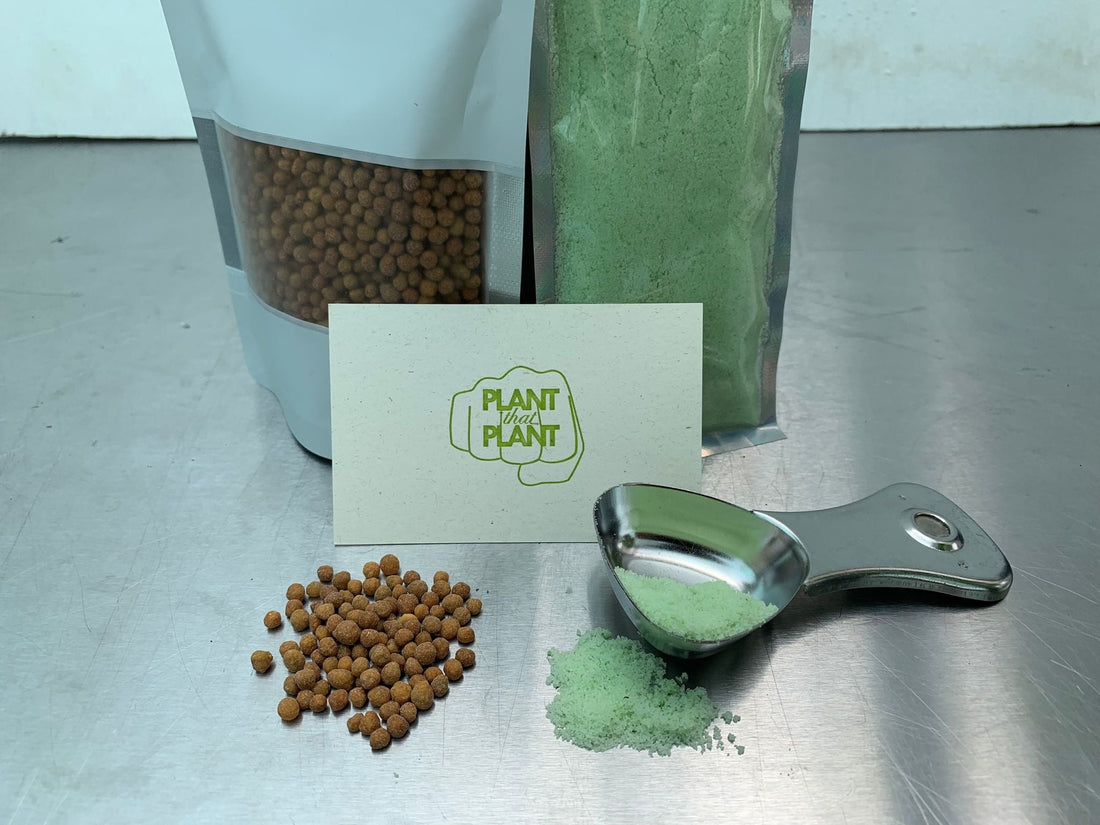
Our Fertilizers
Compartilhar
When growing tropical houseplants like Philodendron, Monstera, Alocasia and Anthurium, balanced nutrition isn’t a luxury, it’s a necessity. But with so many fertilization options available, choosing the right one can be tricky. Should you go for the precision of a water-soluble 20-20-20 formula or the convenience of a professional slow-release blend like Multicote 6M?
Below, we break down the core differences, benefits, and ideal applications of each to help you make the best decision for your setup.
1. Product Overview
Water-Soluble Fertilizer (NPK 20-20-20)
-
Type: Fast-acting, fully water-soluble powder
-
NPK Ratio: 20-20-20 (equal parts nitrogen, phosphorus, potassium)
-
Application: Dilute 1 ml (or 1 krm pinch) per 1 liter of water
-
Usage: Every second watering, all year
-
Yield: Up to 60 L of solution per package
-
Best for: Orchids, tropical foliage plants, aroids in active growth
Multicote 6M Slow-Release Fertilizer
-
Type: Granulated, polymer-coated, slow-release fertilizer
-
Release Period: 6 months (activated by heat and moisture)
-
NPK and Micros:
-
N-tot: 15% (7% NO₃-N, 8% NH₄-N)
-
P: 3.0%, K: 12.5%, plus Mg, S, Fe, Mn, Zn, B, Cu, Mo
-
-
Application: Mix 3–5 g per liter of soil (≈½ tbsp)
-
Coverage: 40 g = ~10–15 plants in 700 ml substrate each
-
Best for: Indoor aroids, tropical houseplants, seedlings, and high-value crops needing stable feeding
2. Key Differences
| Feature | 20-20-20 Fertilizer | Multicote 6M |
|---|---|---|
| Release type | Immediate (liquid, every 2nd watering) | Gradual (granules, 6 months) |
| Control | High precision | Low maintenance |
| Risk of burn | Moderate (if overapplied) | Low (polymer coating regulates release) |
| Convenience | Requires frequent mixing/watering | One-time application |
| Suitability | Ideal for active growth or correction | Ideal for long-term maintenance |
| Cost per dose | Low initial cost, high over time | Higher upfront, lower over time |
3. When to Use What
Use the 20-20-20 Water-Soluble Fertilizer When:
-
You want immediate nutrient availability, e.g., during peak growing season or after transplant.
-
You're growing orchids or Aroids in inert media (like LECA or bark) where nutrients are otherwise unavailable.
-
You need tight control over nutrient delivery, especially for sensitive species or newly rooted cuttings.
-
You want to correct deficiencies fast (e.g., yellowing leaves due to nitrogen deficiency).
💡 Pro Tip: Use lukewarm, pH-balanced water to improve nutrient uptake.

Use Multicote 6M When:
-
You want low-effort, long-term feeding—ideal for busy plant owners or commercial setups.
-
You grow plants in soil-based mixes where you can integrate fertilizer into the substrate.
-
You need to prevent overfeeding—the controlled release drastically reduces risk of burn.
-
You’re repotting and want to give plants a nutritional head start.
💡 Pro Tip: For Aroids grown under high light or heat, use the higher application rate (4–5 g/L) to match growth demands.

4. Best Practice: Combine for Precision + Longevity
In high-performance or professional cultivation setups, growers often combine both:
-
Baseline feeding: Multicote 6M in the soil at planting
-
Boosting/top-up: 20-20-20 during growth spikes or flowering
This layered approach gives your plants both the steady nutrition they need and the flexibility to respond to seasonal growth surges.
Conclusion: Pick Based on Your Needs
Both products are excellent, but serve different strategic roles:
-
For precision, rapid effect, and versatility → go with the 20-20-20 water-soluble mix.
-
For set-it-and-forget-it nutrition and peace of mind → choose Multicote 6M.
The best growers use each at the right time—not either/or, but a toolkit approach.
